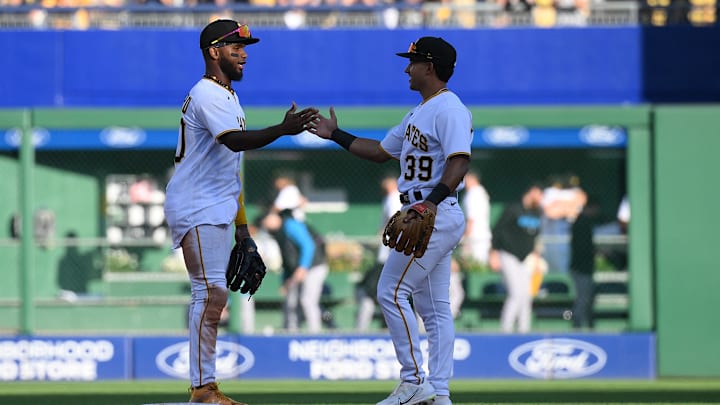Jared Triolo
Jared Triolo silently flew under prospect radars for years. His lowest single-season wRC+ in the minor leagues was 110, meaning at his very worst, he was still 10% better than the league average. Triolo also showed some potential in the Majors last season, and also has an inside track to be the team’s second baseman to enter 2024.
Triolo stepped to the plate 209 times last year in the Majors, batting .298/.388/.389. Overall, he had a .350 wOBA and 118 wRC+. Triolo had a strong 11.5% walk rate, however he struck out 30.1% of the time with an isolated slugging percentage below .100 at .099. More worrisome was the .440 batting average on balls in play, the highest single-season mark of any player with 200+ plate appearances. This BABIP screams that Triolo is due for regression this season.
That high BABIP is mainly a result of the insane .514 mark he put up in September. It was a small sample size of only 72 plate appearances, and he would probably return to Earth if he had more playing time. However, there are a few things to keep note of when talking about Triolo’s BABIP.
Triolo is typically a high BABIP guy. His batting average on balls in play since 2021 is about .360. Even though a rate over .500 is completely unsustainable over a larger sample size, he was hitting the ball much better in September compared to his first call-up. In his first call to the Majors, he had an 84.8 MPH exit velocity and a 2.5% barrel rate. In September, he posted a 90.4 MPH exit velocity and 12.8% barrel rate.
Triolo is by far the best defender among the five players who could claim the position for their own. Considered one of the best defensive minor leaguers when he was a prospect, Triolo looked like a potential future Gold Glove winner at three different positions during his Major League appearance in 2023. Third base is his trade position, where he had +4 defensive runs saved and +3 outs above average in just 309.1 innings. However, although he had less than 100 innings logged at the keystone, he racked up +1 DRS and +2 OAA.
In my opinion, I would give Triolo the starting job. That’s not a knock on Peguero or anyone else we will talk about, but he could be the team’s best defensive second baseman since the days of Bill Mazeroski. I expect him to regress some during the season, as a .440 BABIP, or .510 BABIP are completely unsustainable, but he could still be a solid hitter. Even a league average bat would make him a 3+ WAR infielder.
